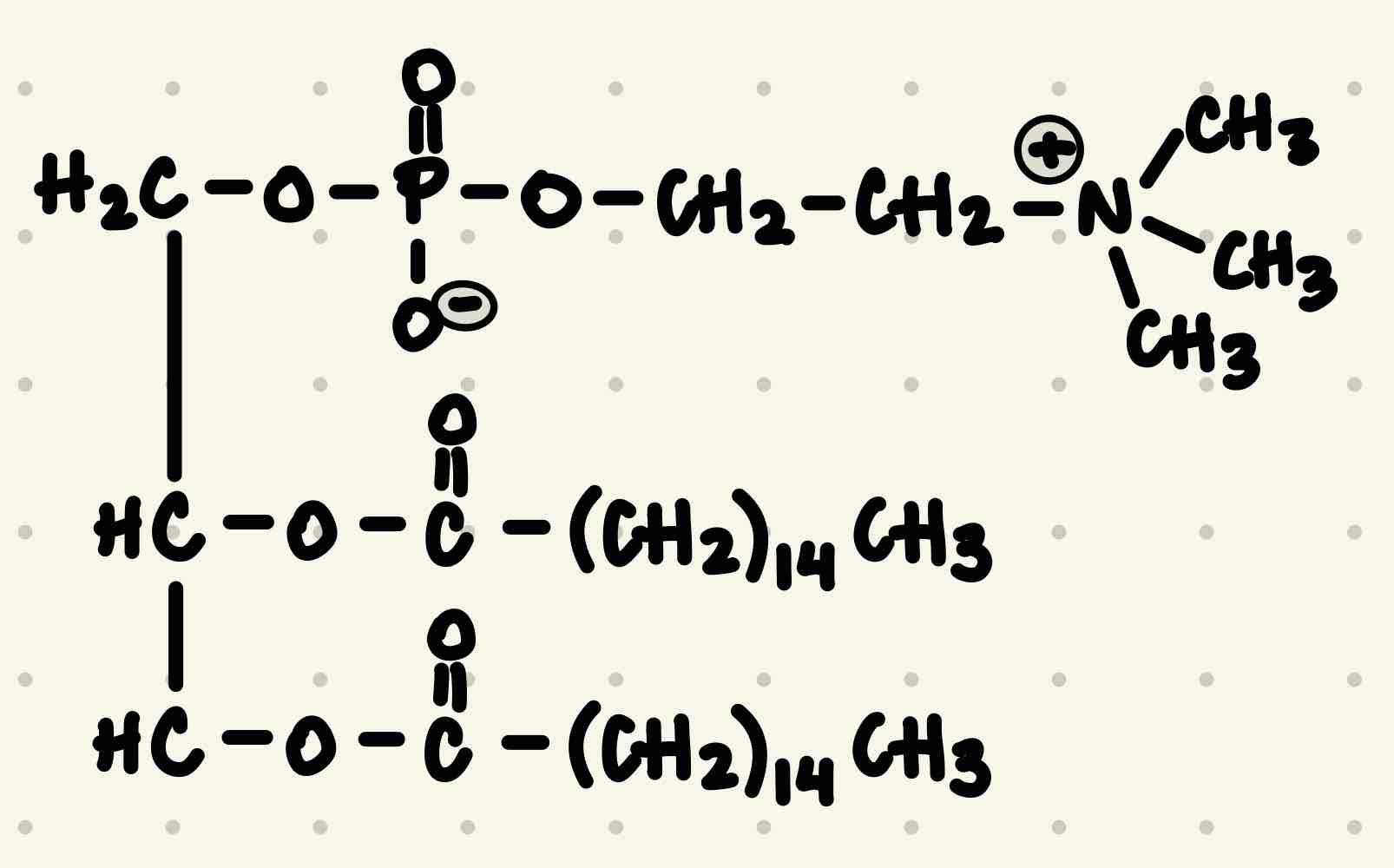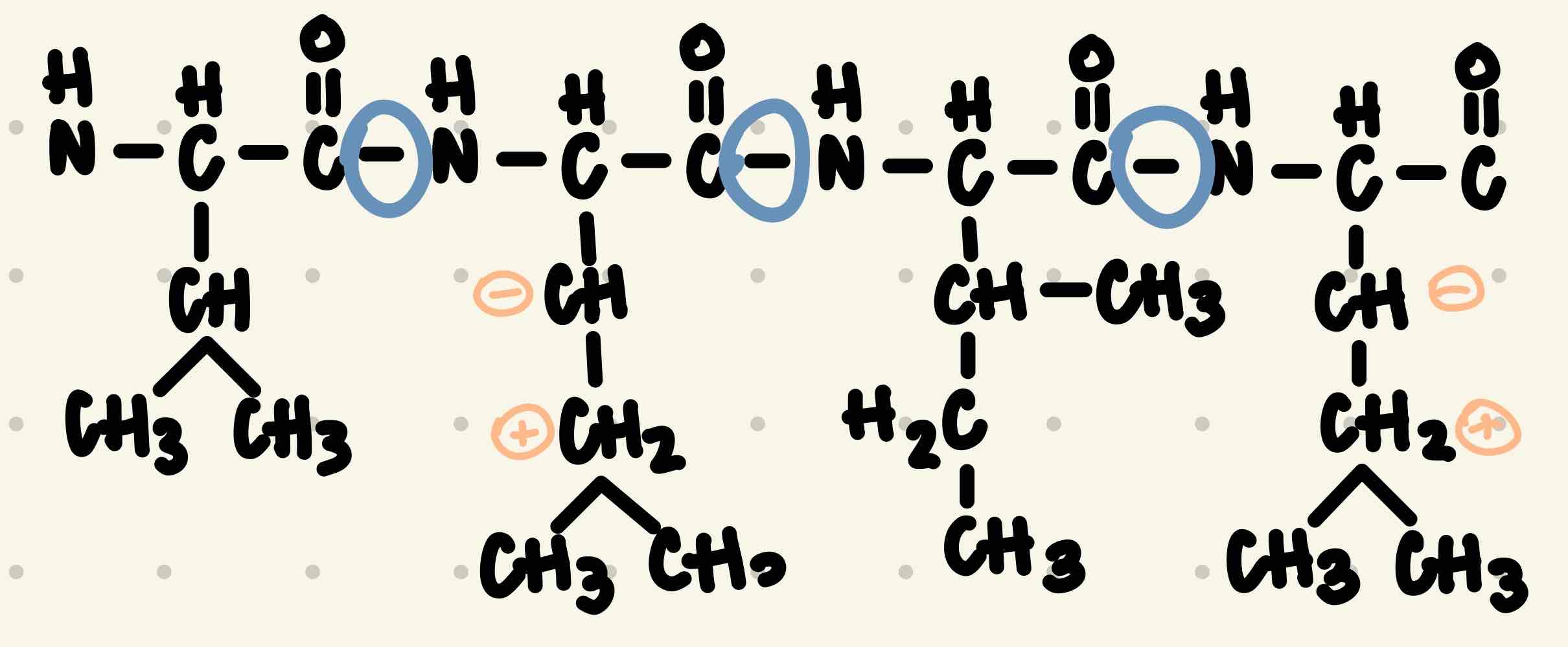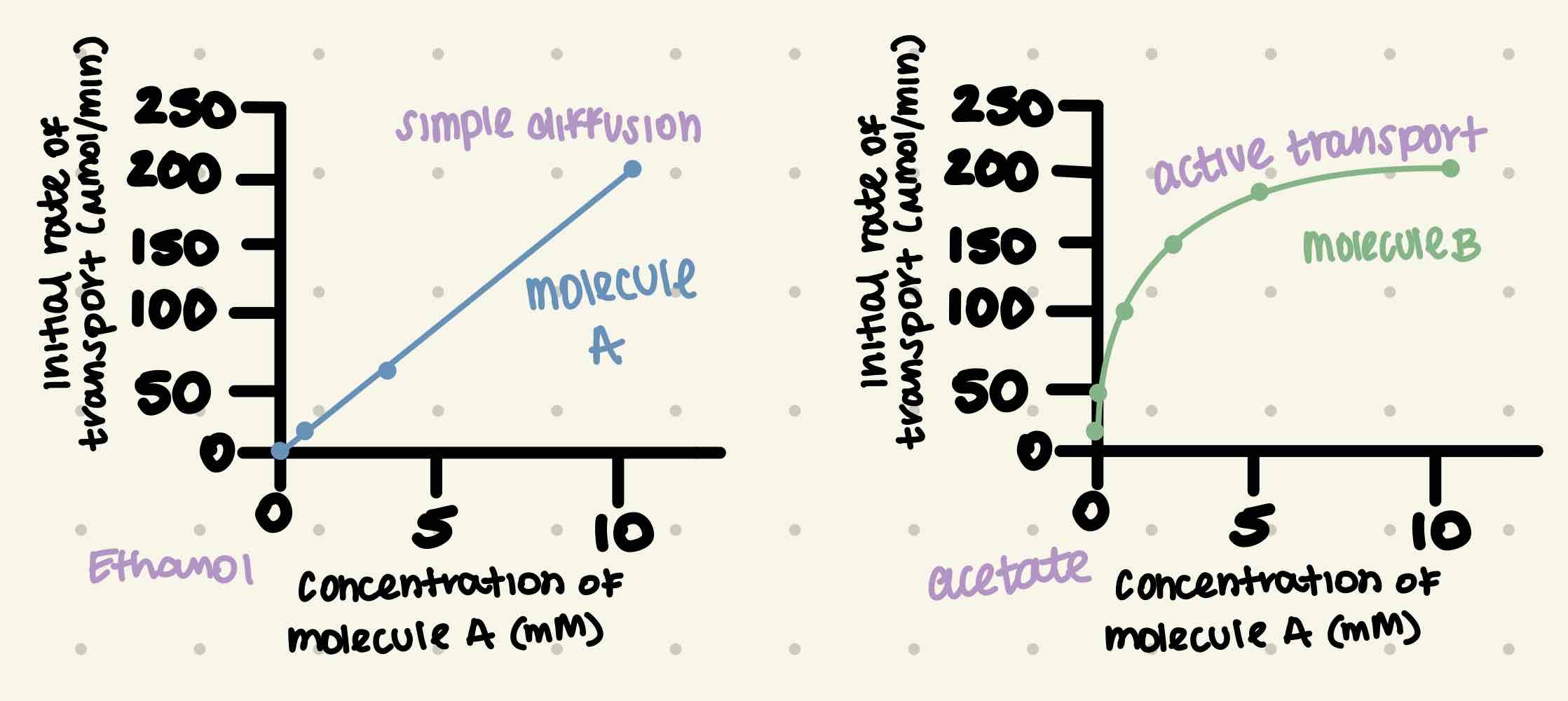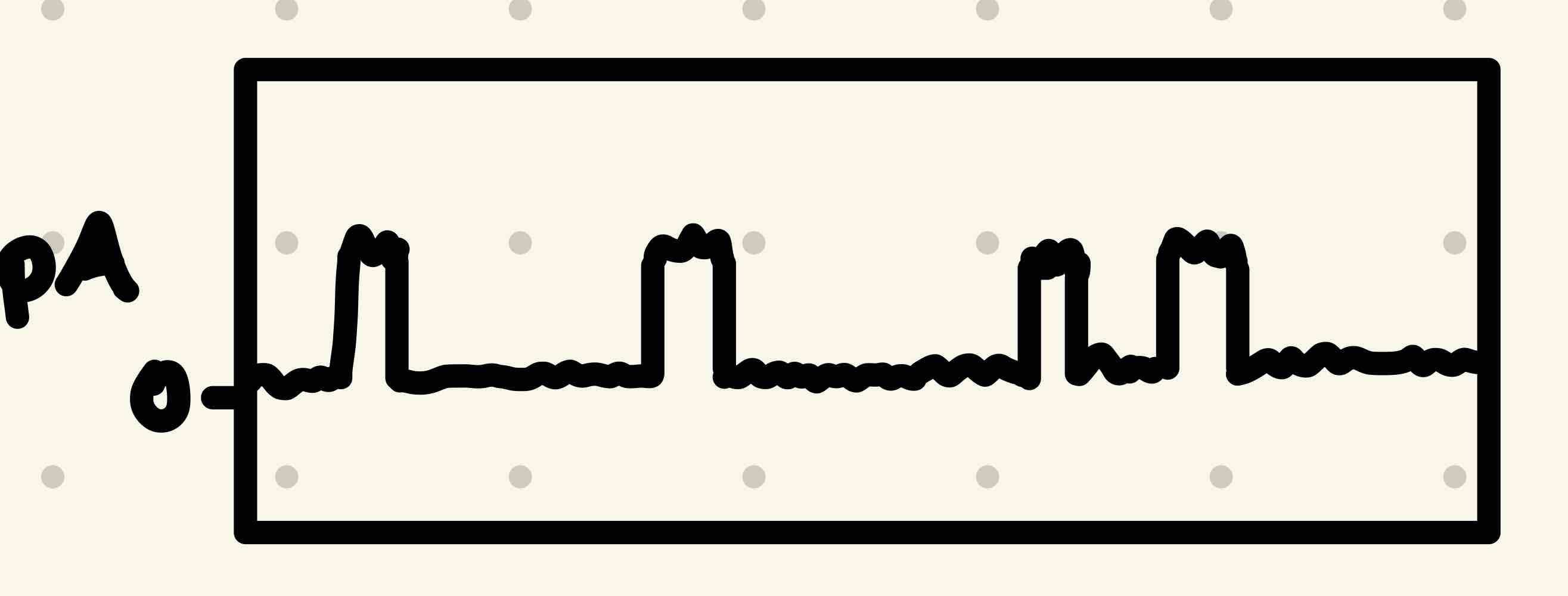BIO Past Exam Questions
1/65
Earn XP
Name | Mastery | Learn | Test | Matching | Spaced |
|---|
No study sessions yet.
66 Terms
Lactose is a disaccharide where galactose is linked to glucose through a beta 1,4 glycosidic linkage from carbon 1 of galactose to carbon 4 of glucose. Galactose is structural isomer of glucose, and the only difference is the orientation of the hydroxyl group on carbon 4. In the beta orientation, the hydroxyl on carbon 1 is in the upward position. Draw the structure of lactose.

The formula weight of glucose is 180. Because galactose is a structural isomer of glucose its formula weight is also 180. What is the formula weight of lactose?
180 × 2 = 360-18 = 342
Briefly explain what the endosymbiotic theory is, and describe some of the evidence that supports it.
an archaean-like eukaryotic cell cmae about and engulfed a bacterium containing a mitochondria
the mitochondrial bacterium could previously survive on its own
the mitochondria became dependent over time
eukaryotic cell became dependent on the mitochondria to provide energy
eventually, the eukaryotic cell also engulfed a chloroplast-containing photosynthetic bacterium
evidence of this would be that early eukaryotes did not contain a mitochondria or chloroplast until a certain point. over time the organelles became dependent on the cell and vis versa.
What is the pH of a solution that is 1 micromolar H+?
How much more acidic would a 1 millimolar solution of H+ be?
6
1000 fold
The nerve cell that extends from the tip of the big toe to the base of the spine in a very tall person is 1 meter long. A typical bacterial cell is one micrometer long. How many bacteria can fit along the length of this nerve cell?
1,000,000
Draw the dipeptide where serine is linked to alanine through a peptide bond. The R group on alanine is simple a methyl group. Remember to include all charges at pH 7.

Draw two cysteines joined by a disulfide bond. The R group on cysteine is similar to that of serine, but it has a sulfhydryl group instead of a hydroxyl group. Remember to include all charges at pH 7.

Suppose you discover a new drug that is effective at treating monkey pox. You call this drug poxivir and determine it has a formula weight of 300. How much of this drug would you need to make 100 milliliters of a solution that is 100 millimolar poxivir? Show calculations
3g

Briefly describe the two major types of secondary structure found in proteins.
Alpha helix: a spiral-shaped structure that contains hydrophobic and hydrophilic sides.
Beta sheets: the parallel variation stacks on top of one another; the antiparallel variation creates “beta barrels.“
Explain why most catabolic reactions can proceed without an input of energy, while many anabolic (or biosynthetic) reactions require the input of energy
Catabolic reactions involve breaking down bonds and releasing energy. Catabolic reactions are exothermic and spontaneous, so it does not need outside energy. Anabolic reactions involve building bonds, a process which requires additional energy.

What kind of molecule is this? Name the general class of molecules it belongs to.
Phospholipid


Consider the portion of a protein shown here.
(a) circle all of the peptide bonds shown.
(b) If this portion of the molecule was in a alpha helical form, would it be able to be part of the protein that spanned the cell membrane? Why or why not?
(c) If this portion of the molecule was in a single beta strand, would it be able to be part of a protein that spanned the cell membrane? Why or why not?
(a) refer to image.
(b) Yes, it would because this particular structure is nonpolar in the R group, just like the cell membrane.
(c) No, because single beta strands can never advance the cell membranes, only beta barrels may.

Suppose you discover a new compound that acts as a potent inhibitor of enzyme that is absolutely required for most bacteria to frow, but is not present at all in eukaryotic cells. Such a compound could be a great antibiotic. How could you determine whether this new compound acted as a competitive or non-competitive inhibitor. Feel free to illustrate a graph.
Competitive Inhibitor: would be able to bind to the active and still have potential to reach Vmax. It just may take longer to get there and would require more substrates.
Non-competitive Inhibitor: would misshape the substrate upon binding to the allosteric site. Doing so would make it impossible to reach Vmax.


In this biochemical pathway, substrate A is transformed through various branches of the pathway to the end products D, J, and Z. Intermediate compounds and products are labeled with a letter, and enzymatic steps are indicated by numbered arrows.
(a) suppose Z exerts feedback inhibition on this pathway to limit its production when concentrations of Z are sufficient for cellular needs. Which enzymatic step (give its #) is it most likely to affect in this way, AND why?
(a) Step 5 because any sooner and it would inhibit the production of products D, J, or both, which would mean the cell does not reach all its needs. Step 6 is not necessary because the cell does not use Y as a product.

In this biochemical pathway, substrate A is transformed through various branches of the pathway to the end products D, J, and Z. Intermediate compounds and products are labeled with a letter, and enzymatic steps are indicated by numbered arrows.
(b) which enzymes step would product J be most likely to affect by feedback inhibition, and why?
(b) Step 7 because inhibiting Step 4 may be detrimental if the cell still requires product Z. Any later step, and Steps 8 & 9 would be would be unnecessary because H & I are not required products.

In this biochemical pathway, substrate A is transformed through various branches of the pathway to the end products D, J, and Z. Intermediate compounds and products are labeled with a letter, and enzymatic steps are indicated by numbered arrows.
(c) Which enzymatic step would product D be most likely to affect by feedback inhibition, and why?
(c) D would likely inhibit Step 3 because any other step would interfere with the production of Z and J, which the cell still requires.
Define the following enzymatic terms as they relate to enzymatic reactions —
Vmax:
Vmax: Velocity maximum, the highest level of efficiency that enzymes may reach
Define the following enzymatic terms as they relate to enzymatic reactions —
Km:
Km: Substrate concentration at ½ Vmax
Define the following enzymatic terms as they relate to enzymatic reactions —
Substrate:
Substrate: The entity in which enzymes, inhibitors or not, bind to carry out their specific function.
Define the following enzymatic terms as they relate to enzymatic reactions —
Activation barrier:
Activation barrier: The amount of energy necessary for an enzymatic reaction to occur
Define the following enzymatic terms as they relate to enzymatic reactions —
Allosteric inhibition:
Allosteric inhibition: Non competitive inhibition, where an enzyme binds to the allosteric site on the substrate so that it becomes misshapen. Making it impossible for binding at the active site.
How did ascorbic acid get its name?
A, meaning without
SCORBIC, meaning scurvy.
It is vitamin C.
Draw the structure of phosphatidylserine. Assume the fatty acids are saturated and are 16 carbons long. Use the -(CH2)n - shorthand. Remember to indicate appropriate charges that would exist in a typical cell.


Your friend isolates a new species of yeast that can grow at neutral pH using either ethanol (CH3CH2OH) or acetate (CH3COO-) as the yeast’s sole carbon source. She measures the initial rate of uptake as a function of concentration of each carbon source and obtains the following graphs:
Based on these graphs and your knowledge of membrane permeability, state the identity of molecules A and B (ethanol or acetate) and the most likely transport mechanism for each. Briefly explain your answer.
refer to image for identity.
Molecule A represents simple diffusion of ethanol because it is a neutral compound and does not require ATP to enter the cell.
Molecule B is the active transport of acetate because the rate of transport plateaus, meaning it is only able to diffuse so much of the negatively charged molecule at a time.

Most mammalian cells have a voltage potential across their plasma membrane of -70 millivolts. Explain how this charge difference is generated.
The charge is generated by the sodium-potassium pump. It pumps 3 Na+ out of the cell and 2 K+ into the cell. This gives the inside a more negative charge. This creates the voltage potential of -70mV.
If a cell finds itself with a voltage potential of -80 millivolts across its membranes, it will rapidly adjust itself back to a potential of -70 millivolts. How does it do this?
The rapid adjustment of the voltage potential is regulated by the K+ leak. The K+ leak opens and closes rapidly allowing K+ in and out of the cell maintaining the -70mV.
Why does the citric acid cycle stop almost immediately when oxygen is removed?
This is because pyruvate cannot be moved to the mitochondrial matrix and therefore is not broken into acetyl CoA which is an input of the Citric Acid cycle.
In the absence of oxygen, yeast cells consume glucose at a high, steady rate. When oxygen is added, glucose consumption drops abruptly and is then maintained at the lower rate. Why is glucose consumed at a high rate in the absence of oxygen and at a low rate in its presence?
Glucose consumption is high when oxygen is absent because it is the only way to generate energy. It takes glucose and 2 ATP to create 4 ATP, (Net 2 ATP). In the presence of oxygen, the glucose is able to undergo glycolysis → citric acid cycle → and then pump it across the membrane. This generates 30 ATP.
Imagine a molecule of glucose being completely metabolized to CO2 and H2O in a yeast cell that is growing aerobically. Place the following events in the correct order, with step 1 occurring first and step 8 last. Think if whether steps occur as part of glycolysis, the citric acid cycle, or electron transport, to place the steps in the general part of the whole process.
_____ Splitting of a 6-carbon compound into two 3-carbon compounds
_____ Transfer of electrons to O2
_____ Generation of ATP in the cytoplasm by substrate-level phosphorylation
_____ Pumping of protons across the inner mitochondrial membrane
_____ Addition of 2-carbon unit of acetyl CoA to oxaloacetate to form citrate, a 6-carbon-compound
_____ Import of pyruvate into the mitochondria
_____ Addition of phosphate from ATP to glucose
_____ Oxidation of NADH to NAD at the inner mitochondrial membrane
__2__ Splitting of a 6-carbon compound into two 3-carbon compounds
__8__ Transfer of electrons to O2
__3__ Generation of ATP in the cytoplasm by substrate-level phosphorylation
__7__ Pumping of protons across the inner mitochondrial membrane
__5__ Addition of 2-carbon unit of acetyl CoA to oxaloacetate to form citrate, a 6-carbon-compound
__4__ Import of pyruvate into the mitochondria
__1__ Addition of phosphate from ATP to glucose
__6__ Oxidation of NADH to NAD at the inner mitochondrial membrane

You have patch-clamped a single voltage-gated ion channel in a membrane and have obtained the recording. Sketch the recording you would expect to see if you repeated the experiment but with two molecules of the same voltage-gated ion channel. Briefly explain your results.
The peaks would be twice in height because there are two ion channels that can move more ions into the pipette. This would increase the voltage measured.

Briefly define the role of the following in photosynthesis:
Reaction center chlorophyll
A pair of chlorophylls will add electrons until they are excited & sent to pheophytin
Briefly define the role of the following in photosynthesis:
Water
goes in PS II and is split by an enzyme, electrons can move on to the pair of chlorophylls
Briefly define the role of the following in photosynthesis:
Photosystem 2
moves electrons from H2O to plastocyanin. This movement creates a protein gradient which is used to create ATP
Briefly define the role of the following in photosynthesis:
Cytochrome b6-f complex
receives electrons from plastoquinone and gives it to plastocyanin. It is also the location where the proton gradient forms.
Briefly define the role of the following in photosynthesis:
Plastocyanin
moves electrons from PS II to PS I after receiving it from the cytochrome b6-f complex.
Briefly define the role of the following in photosynthesis:
Photosystem 1
receive electrons from plastocyanin. e- are then transported to pair of chlorophyll and are excited to pheophytin. Electrons then go to ferredoxin, ferredoxin reductase, and then used to produce NADPH.
Briefly define the role of the following in photosynthesis:
NADPH
final e- acceptor in PS I after receiving it from ferredoxin reductase.
Briefly define the role of the following in photosynthesis:
Ribulose 1,5-biphosphate carboxylase (also known as rubisco)
Adds a CO2 to ribulose biphosphate to make a 6-carbon intermediate. then used to make two 2-carbon compounds.
Describe the first four steps of glycolysis, beginning with glucose, and ending with the formation of 2, 3-carbon compounds.
hexokinase: adds a phosphate to carbon 6 on glucose to make glucose-6-phosphate.
phosphoglucoisomerase: rearranges G6P to become fructose-6-phosphate.
phosphofructokinase: adds a phosphate to the first carbon to make it fructose 1,6-biphosphate.
aldolase: an enzyme which breaks down the previously created molecule to form two, 3-carbon compounds.
Suppose you discover a new single-celled organism whose membranes mostly contain unsaturated fatty acids that are 12 carbons long. Which of the following types of organisms could this be? Circle correct answer
A) a bacterial cell that lives mostly in mammalian intestines
B) an archaeal cell that lives mostly in mammalian intestines.
C) a bacterial cell that lives in cold environments
D) an archaeal cell that lives in mostly cold environments
E) an archaeal cell that lives in very hot environments
C) a bacterial cell that lives in cold environments
Explain why C is the correct answer
C) a bacterial cell that lives in cold environments
unsaturated fats have a kink in the tail which prevents the cell from freezing
Archean have isoprenoid tails, therefore the cell cannot be Archean.

Below is the structure of sodium dodecyl sulfate, a common detergent. Explain how it can remove greasy food residue from dishes. A diagram may be useful in your answer.
Detergents are disruptive agents which will create micelles around grease residue with their hydrophobic tails facing inwards and hydrophilic heads facing outwards.

When you stub your toe, nerve impulses travel from the toe to the base of your spine, where it will be handed off to another nerve that will relay this information to your brain. describe the role of the following proteins, ions, molecules, and structures during the transmission of a nerve impulse from your stubbed toe to the brain.
a) acetylcholine
a) a neuron transmitter which will trigger ligand-gated Na+ channel at the postsynaptic neuron to move the signal closer to the brain.
When you stub your toe, nerve impulses travel from the toe to the base of your spine, where it will be handed off to another nerve that will relay this information to your brain. describe the role of the following proteins, ions, molecules, and structures during the transmission of a nerve impulse from your stubbed toe to the brain.
b) voltage-gated Na+ channels
b) are triggered when the neuron becomes stimulated and moves Na+ inside, creating an action potential
When you stub your toe, nerve impulses travel from the toe to the base of your spine, where it will be handed off to another nerve that will relay this information to your brain. describe the role of the following proteins, ions, molecules, and structures during the transmission of a nerve impulse from your stubbed toe to the brain.
c) mechanically-gated Na+ channels
c) sends a voltage down to the voltage-gated Na+ channels to build the action potential. Triggered by the stubbing of the toe.
When you stub your toe, nerve impulses travel from the toe to the base of your spine, where it will be handed off to another nerve that will relay this information to your brain. describe the role of the following proteins, ions, molecules, and structures during the transmission of a nerve impulse from your stubbed toe to the brain.
d) voltage-gated Ca2+ channels
d) opened by the voltage of the action potential, allowing the vesicles to attach to the membrane so they can release the neurotransmitters.
When you stub your toe, nerve impulses travel from the toe to the base of your spine, where it will be handed off to another nerve that will relay this information to your brain. describe the role of the following proteins, ions, molecules, and structures during the transmission of a nerve impulse from your stubbed toe to the brain.
e) voltage-gated K+ channels
e) triggered by the influx of Na+ into the cell and begin moving K+ out to return the cell to its resting potential.
When you stub your toe, nerve impulses travel from the toe to the base of your spine, where it will be handed off to another nerve that will relay this information to your brain. describe the role of the following proteins, ions, molecules, and structures during the transmission of a nerve impulse from your stubbed toe to the brain.
f) ligand-gated Na+ channels
e) found at the postsynaptic neuron, is triggered by acetyl choline and neurotransmitter. it creates another action potential to continue moving the signal.
Draw the structure of deoxycytidine monophosphate (dCMP). Be sure to indicate all charges that exist at physiological pH.

Draw a linear diagram of a typical, protein-coding, eukaryotic gene. assume this gene contains one intron. indicate important regions of the gene and briefly describe their function.

Choose one classical experiment that led to the discovery that DNA was the genetic material, and explain it. be sure to include the experimenters, their experimental approach, their results, and their conclusions.
Hershey-Chase experiment, studying the T2 virus, known for infecting e. coli.
two cultures of T2 virus, one in radioactive P and the other in radioactive S
P is found in DNA and S is found in proteins
T2 virus was allowed to infect e. coli
two cultures were blended then centrifuged to separate viral heads from e. coli
radioactive P was present within the cells, S maintained with the virus
next gen of radioactive P e. coli grew
radioactive P was found present
Conclusion: because radioactive P was integrated into the bacterial DNA then passed onto the next gen, they knew DNA was in fact a genetic material.
Suppose you isolate genomic DNA from a newly discovered organism and find that 20% of its bases are adenine. What percent of nucleotides int he genome of this organism are cytosine?
30% are cytosine
Suppose an error occurs during splicing of an intron and one extra nucleotide is left attached to the junction between the two exons. Describe the effect, if any, this would have on the protein by ribosome that read this mRNA.
This would lead to the mRNA being read incorrectly. This extra nucleotide would be included in codons and translated into a specific amino acid which could change the entire protein being made.
Would you expect mRNAs in mitochondria of eukaryotic cells to have a 7-methyl G cap at their 5’ end? Why or why not?
No, mRNAs can only get the cap when going from the nucleus to the cytoplasm. The mitochondria is a prokaryotic environment, so a cap would not be necessary.
Briefly describe how eukaryotic ribosomes translate a messenger RNA. Be sure to include steps involved in initiation, elongation, and termination. (Pt.1)
Initiation:
Ribosome binds to mRNA using the 7-metyl-guanine-cap, where it will eventually find the start codon
next, tRNA binds to it at the A-site and carries an amino acid that matches the codon on the mRNA
the ribosome moves along the mRNA sequence and concurrently the tRNA shifts to the P-site
forms a peptide bond on the amino acid at the P and A site
Briefly describe how eukaryotic ribosomes translate a messenger RNA. Be sure to include steps involved in initiation, elongation, and termination. (Pt.2)
Elongation:
ribosome moves on to the next mRNA sequence, again binding another tRNA to the A-site and making a peptide bond at the P-site, connecting the amino acids
mRNA eventually moves to the E-site, where the tRNA is ejected
this process continues until a stop codon is reached.
Briefly describe how eukaryotic ribosomes translate a messenger RNA. Be sure to include steps involved in initiation, elongation, and termination. (Pt.3)
Termination:
once the final tRNA is moved to the P-site to form a peptide bond, this completes the protein
once the tRNA reaches the final E-site, the ribosome and other factors disband and leave the sequence.
The very ends of linear chromosomes cannot be replicated by the standard mechanism used to replicate the bulk of the DNA. Why not?
This is because the lagging strand contains Okazaki fragments built in the 3’ to 5’ direction, which over DNA replication will make the strand shorter. Telomerase also degrades as they age.
Briefly describe how typical eukaryotic cells get around this problem of replicating the ends of chromosomes.
Through the use of telomerase. Telomerase recognizes the ends of the chromosome and begins adding a complementary strand to make the DNA longer. This gives polymerase more room to bind and finish replicating.
Describe the function of the following protein, complex, or enzymatic activities.
Histone
They have a positive charge, so the relative negatively charged DNA wraps around histones to become more compact. Eventually this will lead to the formation of chromosomes.
Describe the function of the following protein, complex, or enzymatic activities.
Primase
sets up a RNA primer in replication so polymerase knows where to begin replicating.
Describe the function of the following protein, complex, or enzymatic activities.
Ligase
will “glue“ together Okazaki fragments so there are no gaps in the DNA present on the lagging strand.
Describe the function of the following protein, complex, or enzymatic activities.
Ubiquitin
Tags a protein and guides it to the proteasome active site, where it may ultimately become an amino acid sequence.
Describe the function of the following protein, complex, or enzymatic activities.
3’ to 5’ Exonuclease activity of DNA polymerase
Proof-reads the DNA sequence and corrects DNA polymerase errors.
suppose a mutation in the gene encoding the tryptophan repressor prevented the repressor protein from binding tryptophan. What effect would this mutation have on expression of the trp operon?
This will result in the continued synthesis of tryptophan because it can longer bind to the repressor. Ultimately, this will lead to an abundance of tryptophan present in the cell.
Describe how E. coli uses both positive regulation and negative regulation to ensure that the lactose operon is expressed at the appropriate times.
Positive regulation, where the operon was turned on. When glucose was not present in the cell, but lactose was, the repressor was absent and the activator, CAP and CAMP, were turned on.
Negative regulation because the lac operon is not needed if lactose is also absent. When glucose and lactose were absent, the repressor was present on the gene, and the operon is turned off.